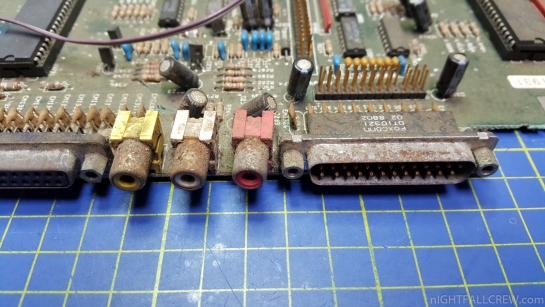
Commodore Amiga 2000 – Black Screen of death
The Battery Acid has corroded some pcb tracks (not visible to the naked eye) connected to the pin of the resistor packs RP900 and to MC68000 and probably other IC.
Gallery before cleaning and repair:
Commodore Amiga 2000 – All that glitters is not gold.
After some work it seems to work but still suffers of some problems.
Present problems:
- All Connectors are rusty and uprooted.
- Boot sequence problems, when boot correctly, there are no problems.
Resolved issues:
- Corroded tracks, i have made 12 bridges*.
- Replaced “deflowered” kickstart socket.
- Replaced not working Kickstart 1.2 ROM.
- Replaced 4 x LM33256 (RAM) shorted.
I need to assess whether or not continuing with the repair…
Big gallery of the repairing:
Welcome back, Commodore Amiga 2000.
I do it very shortly, i don’t like writing a lot because i don’t have time to do and i don’t like it.
We are left with the Amiga 2000 that sometime works and sometime not.
Defect/Boot Errorr code was: gray / yellow / green / rainbow / out of sync / purple / white.
When this not happen, the boot works perfectly and i can see theusual “hand”
- To fix the problem of the green screen that indicates problems of the RAM, i had to replace 3 x LM33256 (Total RAM replaced: 7), these ram are not shorted but partially functional and 1 x 74LS244.
- To fix the problem of the yellow screen which created problems with the LATCH, i had to replace a 1 x 74LS373.
I have also replaced the socket of the MC68000 CPU and i have discovered another interruption between the pitche and track and also a lot of corrosion and recovered some connectors of an old Amiga 2000 REV 4 motherboard to give an decent aesthetic look to the repaired motherboard.
Now the Commodore Amiga 2000 works perfectly.
Before and after Gallery:









Recent Comments